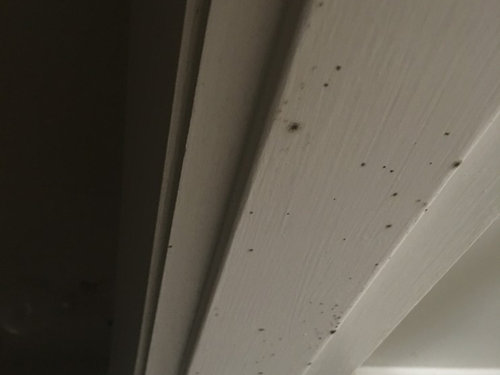Even on the outside the organic debris frequently held on the underside of wallpaper by its glue provides a welcome food source on which mold growth can thrive.
Mold in closet exterior wall.
Mold can also grow hidden behind wallpaper.
In seasons of high humidity closets can prove conducive to mold growth according to north dakota state university professor kenneth hellevang.
A musty damp smell where you ll find it growing mold on basement or exterior walls occurs when water vapor in the air meets a cold surface and turns the vapor into a liquid.
Closets along exterior walls have the highest risk as excess water vapor accumulates in the dark isolated location.
Check your home for sources of excessive moisture.
Leaky plumbing leaks behind adjacent walls can contribute to mold in closets.
Add a few cups of water to a spray bottle.
Look for uninsulated exterior windows and walls including uninsulated closets along exterior walls where mold can grow when you run your heating in the winter.
These include flooding water leaks damp basements hvac duct systems or shower or cooking steam.
The first is poor air circulation.
Step 4 fill a bucket with warm water adding several drops of mild dishwashing soap.
Mold in closets usually occur on the closet s outside wall of the house and appears as dark stains near the floor.
These spaces often contain pockets of humid moist air.
Attic mold mold growth up in the attic can migrate down through closet ceilings and into walls.
Wallpaper glue can hold organic debris which can then become a food source for mold growth.
Allow damp clothes linens or towels to dry completely before storing them in a closet.
Ensure that clothes and other storage items are clean before putting them away in a closet.
Mold commonly grows out of sight behind walls in the wall cavities.
Spray all the mold covered areas in the closet with the water to keep spores from spreading in the air.
Bathrooms and laundry rooms develop mold because they re typically very humid.
When you open the closet warm moist air from the house flows into the closet and condenses on the cold wall.
Warm air registers are normally located in front of windows so they can blow warm dry air over the glass to cut down on condensation.
An outside wall can get very cold.
Humidity closets usually stay closed so they easily retain any moisture in the air.















































